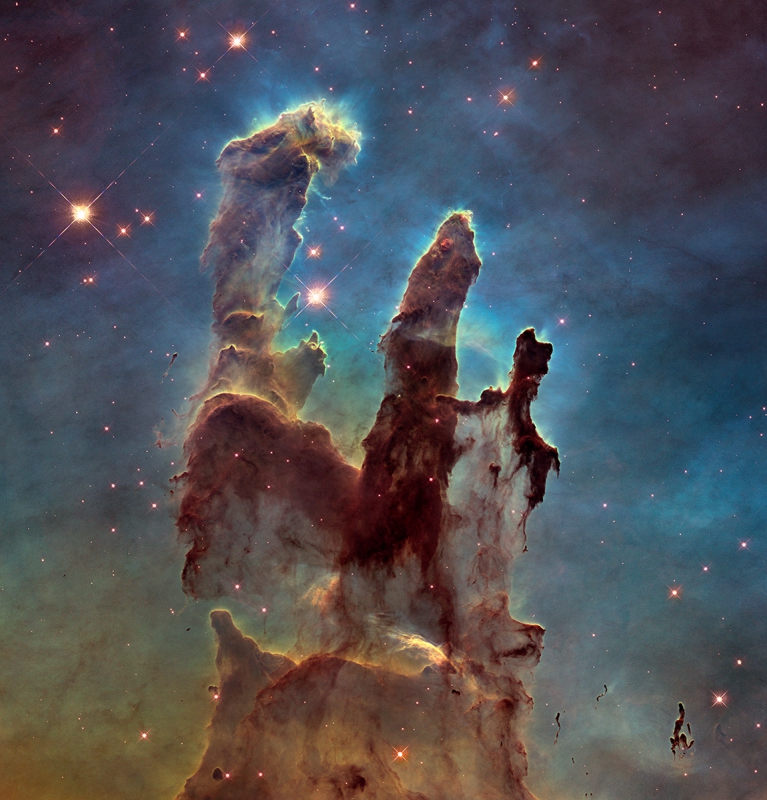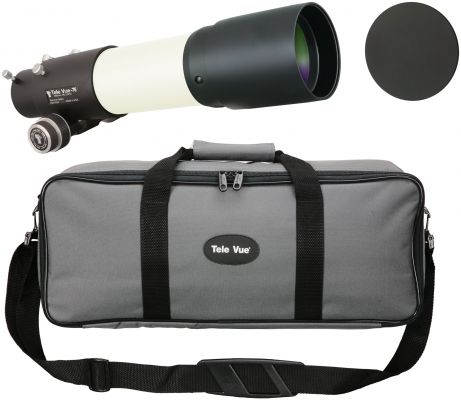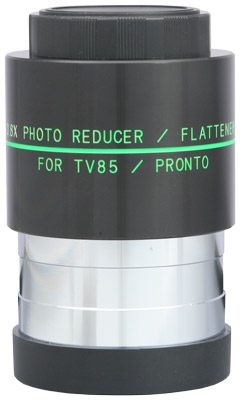Tele Vue-76 Gallery: Catching Up with Diego Cartes!
Back in December 2018, we featured some spectacular wide-field, deep-sky images by Diego Cartes Saavedra in Chile. All the images were taken with his Tele Vue-76 APO refractor and Tele Vue TRF-2008 0.8x Reducer/Flattener. This combination achieves a 380mm focal length at f/5, ideal for imaging large swaths of deep sky. You can still read the original blog at Tele Vue-76: Imaging the Southern Hemisphere. At the end of that post, we wished Diego continued success in his astrophotographic journey. Ever since, we’ve followed his progress through his postings on the AstroBin imaging hosting platform for astrophotographers. We felt it was time to “catch up” with him and post some of his latest captures in this gallery blog.
NGC 6188 ─ The Fighting Dragons of Ara (Hubble Palette)

Prior generations of supernovae explosions spread dust and gas in this complicated region of space. Continued explosions compressed this material and sparked the formation of new massive stars. Stellar winds from these stars intricately sculpted the region into areas of glowing gas, reflection nebulae, and dark clouds of dense matter. The resulting dark, dusty lanes conjure up images of two dragons. Light from open cluster NGC 6193 illuminates the large blue reflection nebula where the dragons face off. The dense, blue object at the lower-right is pk336-00.1 (also NGC 6164 & NGC 6165) ─ an emission nebula formed from the expanding outer layers of a giant, hot, O-type star at the center. Around this compact object is the faded outer ring of reflected blue dust from earlier shedding events. This image was awarded an AstroBin “Top Pick” nomination.
Sharpless 2-308 (Bicolor palette)

Like a ghostly apparition suspended against the blackness of space, many see the grinning face of a Porpoise in this nebula. Sharpless 2-308, also Porpoise Nebula or Gourd Nebula, in Canis Major is a bubble of gas formed as the bright central star in the image shed outer layers of hydrogen gas. Stellar winds from the star are causing the gas to collide with slower-moving shells from earlier in the star’s evolution. This forms the shape of the nebula that we see today. “This is the first time I attempted to capture this nebula. Its light is mainly OII[I], but Hα frames also revealed some nebular clouds in the field. It is a very big target, so it is perfect for small refractors.” Diego’s effort in creating this image resulted in his being awarded an AstroBin “Top Pick” nomination.
M17 ─ Omega Nebula (Hubble Palette)
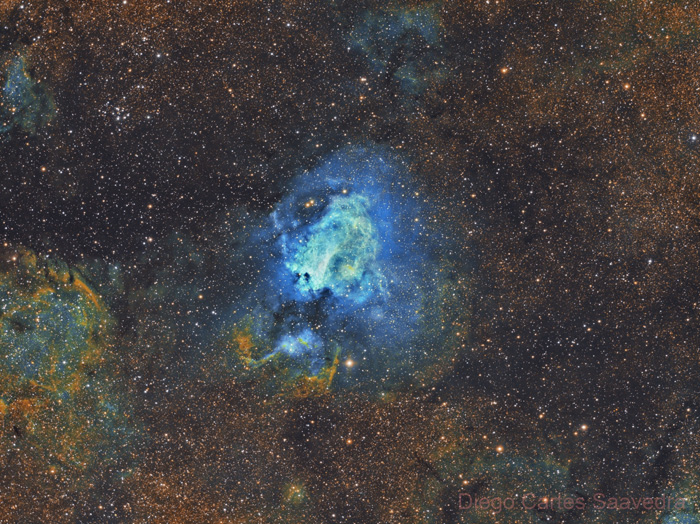
The Omega Nebula, also known as M17 or Swan Nebula, is a “stellar nursery” similar to the more famous Orion nebula. However, it’s seen “edge on” from Earth instead of “face on” as the latter. Ultraviolet light from a cluster of stars in the nebula causes the surrounding hydrogen-rich gas to glow. Diego says he processed this image using Pixinsight’s Colormask script by following a tutorial by Chuck Ayoub. Diego tells us how he’s improved his imaging over time:
I think my processing has improved over time, but also I have tried to improve the quality of the images, increasing the exposure times of the subframes, the total integration time, and being more strict on the precision of the guiding.
Rosette Nebula (Hubble Palette)
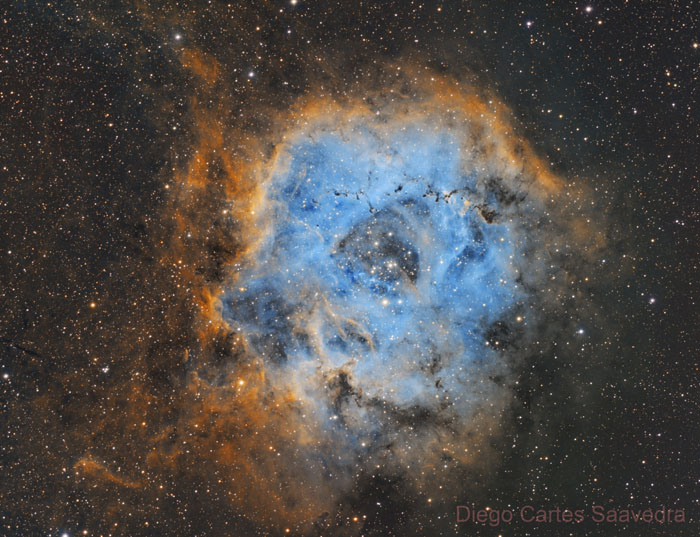
The Rosette Nebula (NGC-2237 or Caldwell 49) is an emission nebula and star-forming region in the constellation Monoceros (the Unicorn). It is comprised mostly of hydrogen gas. An open star cluster (designated NGC 2244), formed from material in the nebula resides in the center. Energy pumped out by massive blue-white stars in the cluster excites the gas in the nebula to glow. We can see the cluster clearly in the center because strong stellar winds from the massive stars are sweeping dust clear of the area. In Diego’s image, the narrowband Hubble Palette filters reveal various layers of material within the heart of the Rosette. The resulting dimensional quality draws the viewer from the ruddy edges of the nebula into the aqua-colored center and then out the “back” aperture of the structure.
IC 4628 ─ Prawn Nebula in Scorpius (Narrowband Hα)
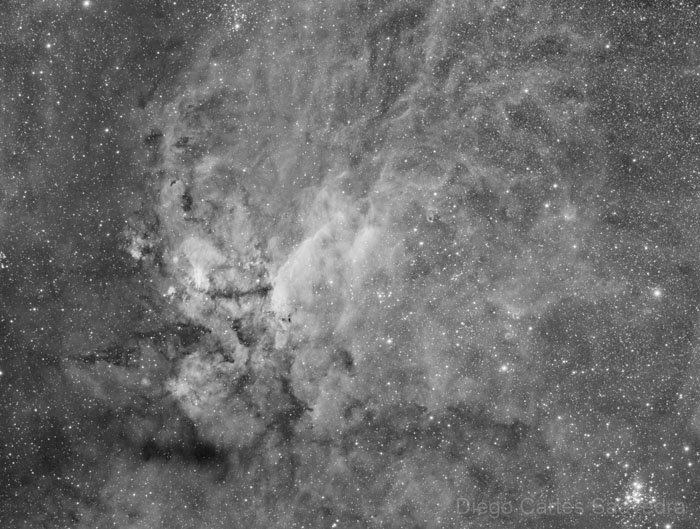
The Prawn (also known as IC 4628 or Gum 56) is an emission nebula and stellar nursery rich in hydrogen gas in the constellation Scorpius. The clumps of stars in the nebula were likely formed there. Open cluster NGC 6231 is visible in the lower-right-hand corner. “This image was made using only the information captured using a Hα filter,” says Diego. This allows him to bring out the details inside the nebula.
Statue of Liberty Nebula (Hubble Palette)
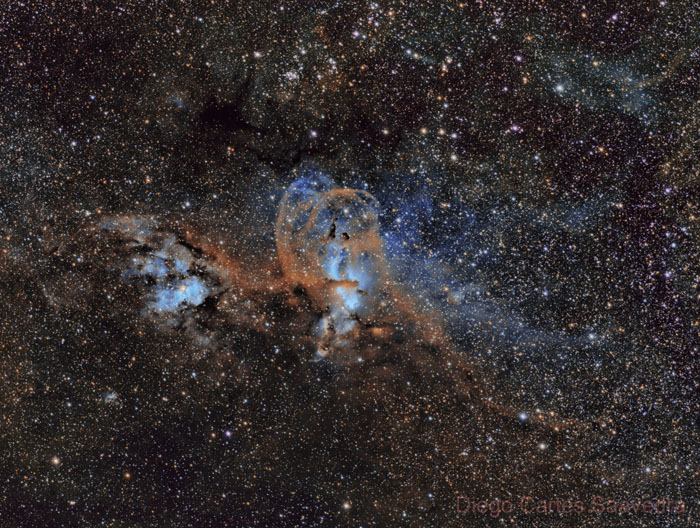
Also known as NGC 3576, this image features loops of gas blown by the stellar winds of young stars intertwined with the dust from old exploded stars. While the nebula was discovered by William Herschel in 1834, the appellation “Statue of Liberty Nebula” is a recent suggestion (2009) by Dr. Mazlin of the Star Shadows Remote Observatory. The “Statue” is formed by the shape of the dark matter in the nebulosity at the center of the image. This image was awarded an AstroBin “Top Pick” nomination.
We hope that you enjoyed this gallery and we wish Diego Cartes continued clear skies for imaging with his Tele Vue-76!
More Info
- Our first blog on Diego Cartes from 2018: Tele Vue-76: Imaging the Southern Hemisphere
- Tele Vue-76 webpage (mobile site)
- TRF-2008 0.8x Reducer/Flattener works with any 400-600mm doublet to create a better scope for imaging (mobile site).




